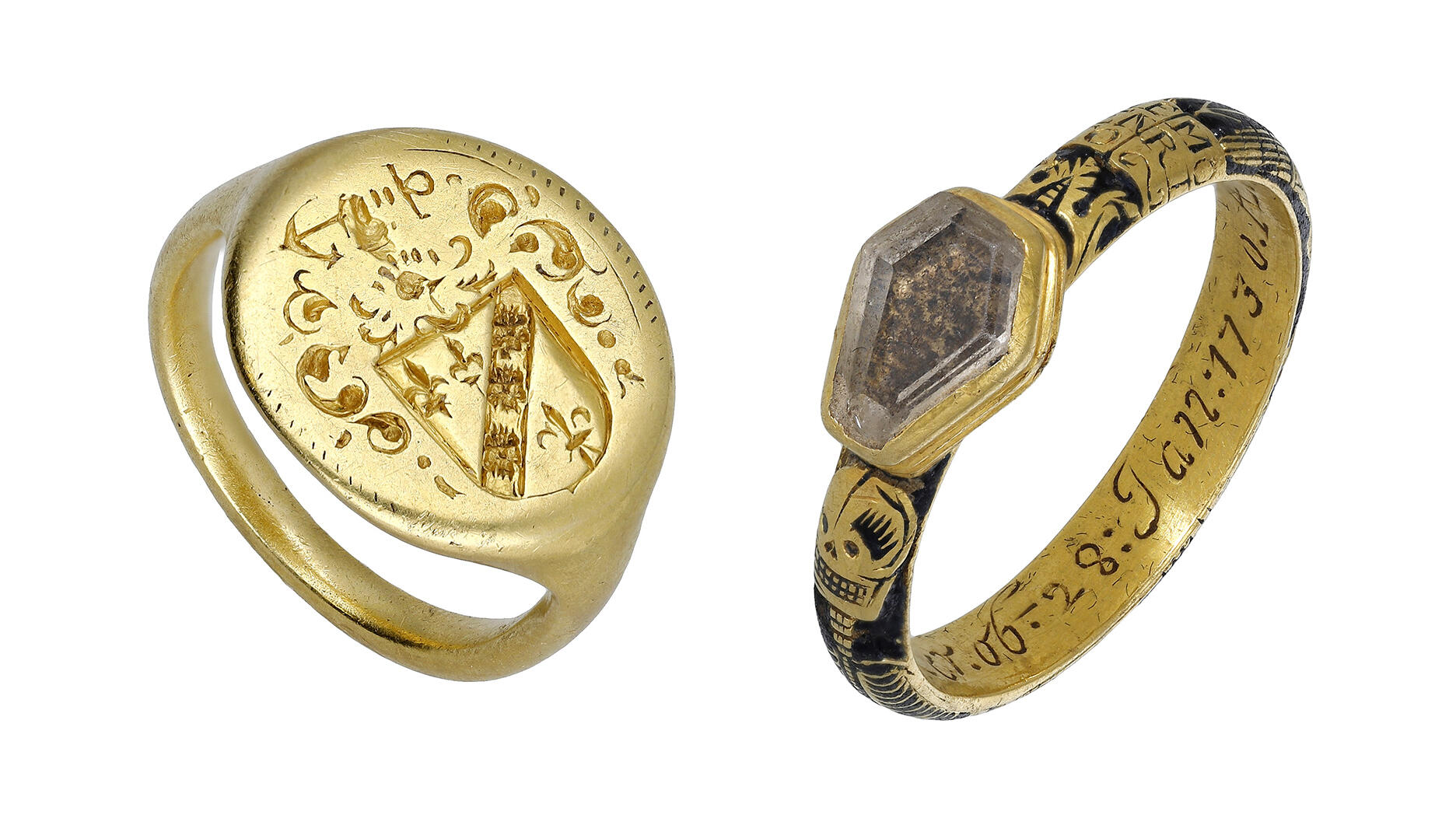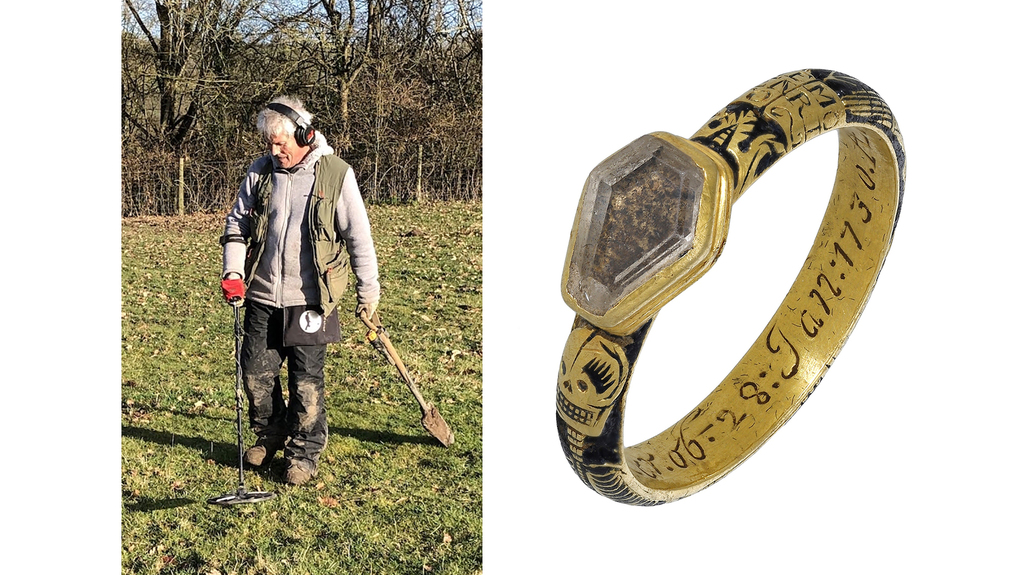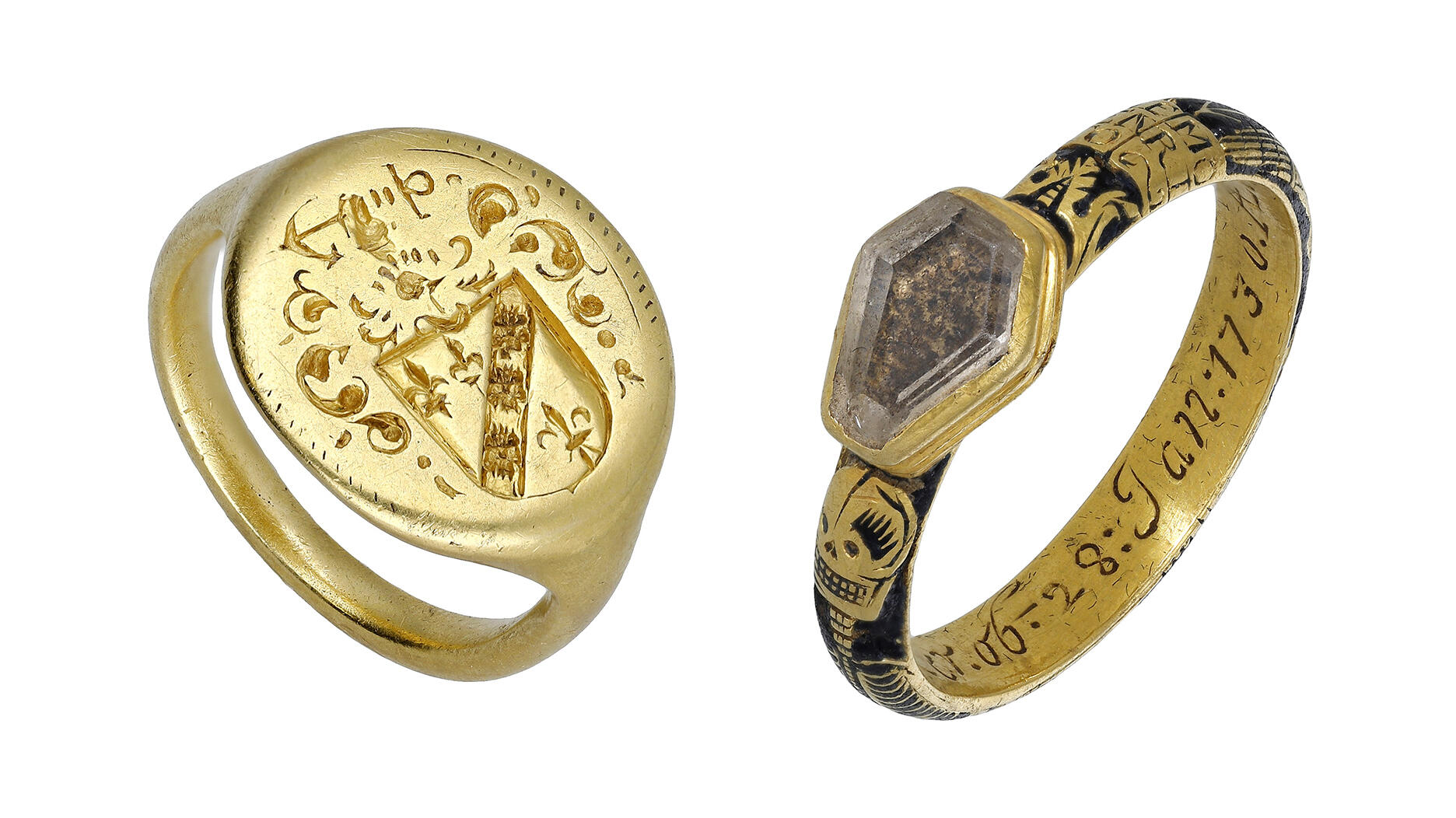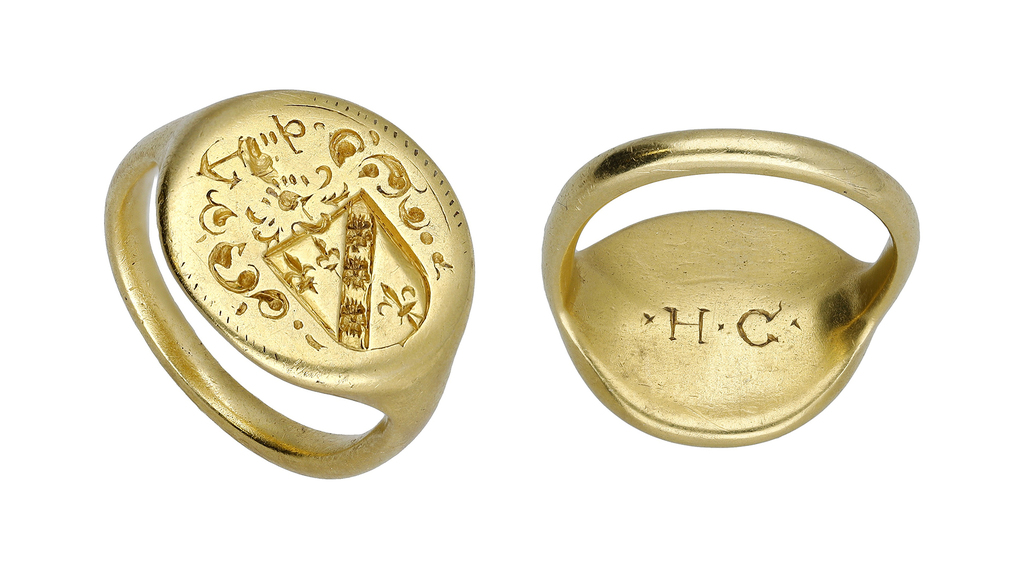This is a nice find so I'll watch for the results of the auction so we can see what the buyer values it at. This will provide a nice little nest egg for these retirees so good for them!
These Retirees Discovered Auction-Worthy Antique Jewels

This 17th-century gold seal ring (left) and this 18th-century memento mori ring, both discovered by U.K. retirees, are heading to auction at Noonans on March 14.
"London—In November 2012, retired schoolteacher Richard McCaie, then 71, was landscaping in the garden of his 16th-century farmhouse in the English village of Braunton when he found something extraordinary.
He had dug a hole about 10 inches deep to plant a Ceanothus bush, also known as California lilacs, when he spotted a gold ring.
It turned out to be a 17th-century treasure, and it is headed to auction at Noonans in London this month.
“The ring dates from 1620 and very likely belonged to Humphrey Cockeram of Cullompton in Devon. The ring bears a seal with the coat of arms of the Cockeram family and the initials ‘H C’ behind,” said Nigel Mills, a consultant on artifacts and antiquities at Noonans.
Cockeram was recorded as head of the family in 1620 and lived at nearby Hillersdon Manor in the early 17th century, located about 42 miles east of where the ring was found.
The Cockeram family were patrons of the church, said Noonans, and their last name is derived from the old English word “Coccan,” which means “dweller by the stream.”
This 1620s ring, discovered by retiree Richard McCaie, is believed to have belonged to a man named Humphrey

This 1620s ring, discovered by retiree Richard McCaie, is believed to have belonged to a man named Humphrey Cockeram.
The flat oval bezel of the ring features a coat of arms, which includes a square-topped shield inscribed with three leopards’ heads and three fleur-de-lis.
Above the shield is a crest with an arm holding an anchor and a leaf design on either side. The entire design is encircled by a pellet border.
“I was very excited when I dug up the ring, which has now [been] recorded on the Portable Antiquities Database,” said McCaie, who didn’t realize what he had found at first.
The gold seal ring will head to the auction block as part of Noonans’ “Jewellery, watches, and objects of vertu” auction on March 14. It is estimated to sell for £8,000-£12,000 ($9,500-$14,300).
“We were amazed when Noonans told us the value and we are planning to use the proceeds from the sale to help our children,” said McCaie.
A decade after McCaie’s discovery, retired civil servant David Nicklin, then 65, found himself in a similar position.
In the Vale of Glamorgan in the southeastern part of Wales, Nicklin was out with a friend running a metal detector across a field that had been searched many times before.
This time, however, was different. The field had recently been deep plowed for the first time in about 40 years after a potato harvest.
With only one old farthing discovered, Nicklin was ready to head home until he uncovered a gold ring under three to four inches of soil.
It was a memento mori ring from the 1700s.

Retiree David Nicklin, left, found this 18th-century memento mori ring while using his metal detector.
“The ring has a coffin-shaped rock crystal inset into the bezel and is dated on the inside 28th Jan 1730 with the name ‘eliz tucker aged 65’ and inscribed with ‘Memento Mori,’ which translates as ‘remember thy death,’” said Noonans consultant Mills.
“Worn on the little finger, they were a reminder to the wearer to live a life without sin as they will be held accountable in death. This was the height of fashion in the early 18th century,” he added.
As for the surname Tucker, it has its roots in the west of England, said Mills, and is another name for a fuller, or someone who cleans wool.
The ring, deemed to be in excellent condition, is expected to sell at the Noonans auction for £3,000-£4,000 ($3,500 to $4,700).
Because the ring is less than 300 years old, the U.K.’s Treasure Act does not classify it as treasure, and so it could be returned to Nicklin, though it was recorded with Swansea Museum.
“I have found a few gold rings in the past but nothing like this one,” said Nicklin, who has also found gold coins from the 1600s and Bronze Age weapons during his treasure hunts.
“I was over the moon although I didn’t realize its potential value. I hope the ring sells well as my wife is wanting to buy some new carpets with the proceeds,” he said.
The auction’s “early jewels” collection also includes a 12th-century ring and posy rings from the 15th through 18th centuries.
To learn more about the auction, visit ... "
https://nationaljeweler.com/articles/11 ... 0Campaigns


